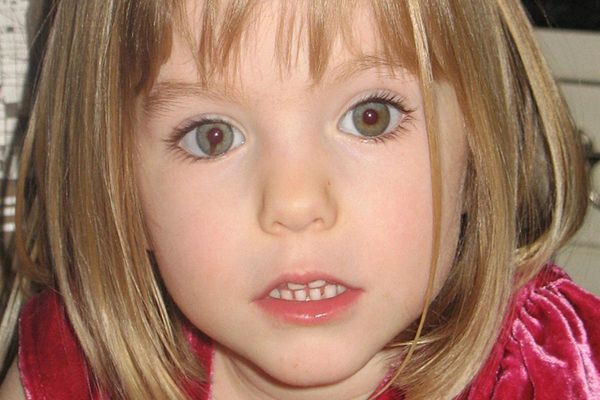
This material was originally published as the Murals and Mosaics newsletter on Oct. 13, 2023. Sign up for the newsletter here.
Good afternoon!
One of the figurative bright spots of 79th Street is literally bright once more.
Max Sansing’s “Culture is Power” mural across from the Avalon Regal Theater was recently restored, repainted.
Or, better put, it was reimagined as Sansing descended on the site to fix up the painting after years of chipping and fading thanks largely to our crummy weather.
See below for how it looks now, and click here or scroll below to learn more. Sansing’s artwork is this week’s Chicago Sun-Times “Murals and Mosaics” feature.
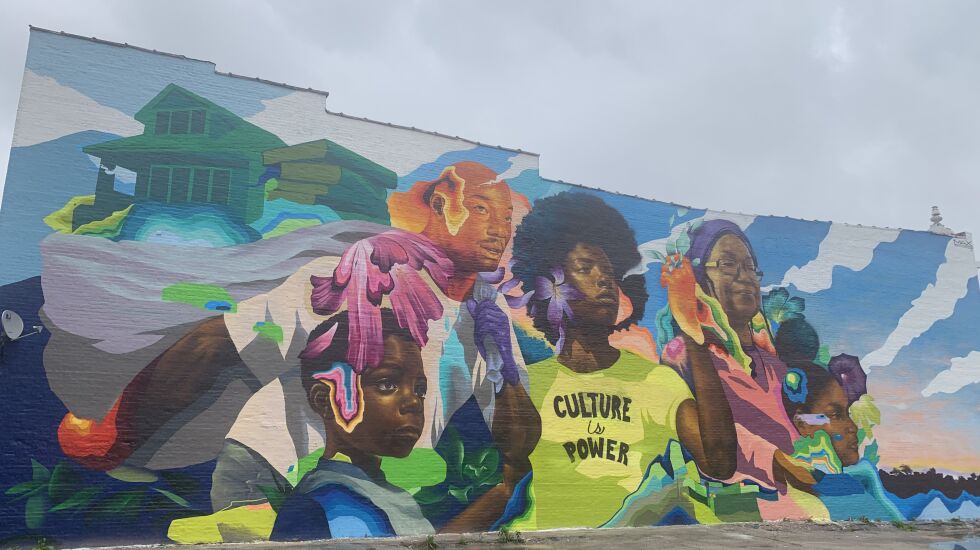
“I pretty much painted it from scratch, to be honest with you,” Sansing says, adding the brick wall also had to patched up significantly.
The new version is certainly similar to the old one in appearance, and it keeps the same theme.
But there are “more flowers and abstracts,” Sansing says, adding he aimed to be ”more contemporary,” consistent with his current style.
One sign of that: fewer paint streaks on faces, one of his hallmarks.
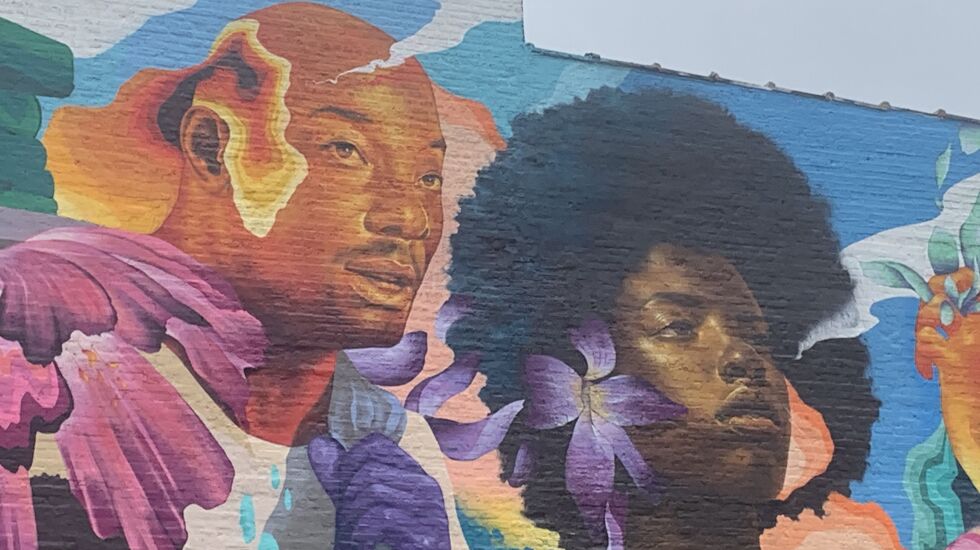
“The face paint is something I moved away from,” he says.
“Without knowing, to be honest, I think I kind of replaced it by doing the color waves” on “the cheek areas of some of my portraits.”
“With those designs, they’re more of an aesthetic feature, and less of a symbolic nature,” Sansing says. “I think it’s more of me just playing with how color combinations can convey emotions when placed on a portrait. I’m leaving it up to the viewer at that point.”
The mural, at the intersection with East End Avenue, conveys the power and importance of the family.
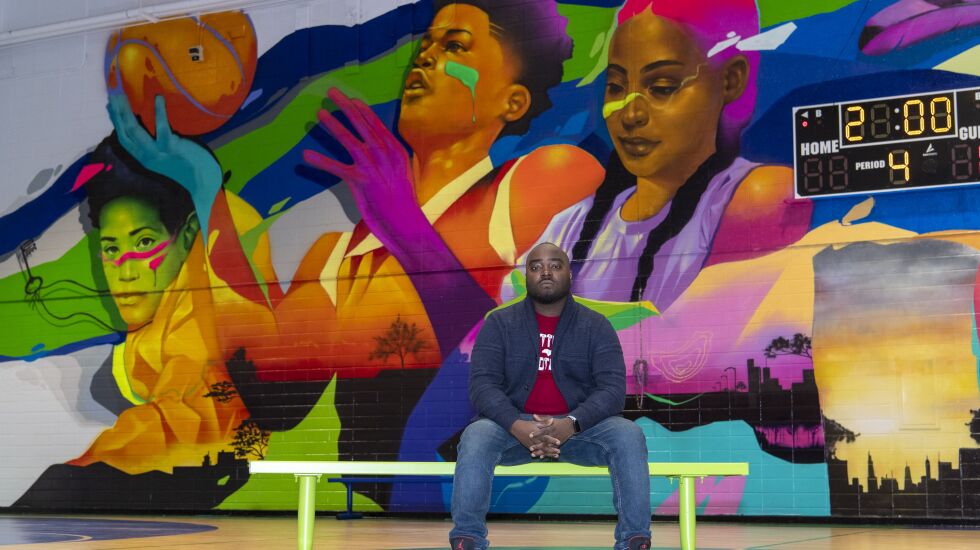
Sansing says he’s contemplated “what do we do to start to turn things around” in troubled communities.
“We always said, it starts with the family. As long as the family’s strong, the neighborhood is strong. As long as the neighborhood is strong, the community is strong.”
As for the people portrayed in the mural, “it’s a family but more so people who belong in roles of a family dynamic . . . a strong female presence . . . a strong male presence, the children, the elders.”
The woman in the center of the painting wears a shirt with the words “Culture is Power.” Sansing says he’s trying to convey that “our culture is our wealth.”

He says there’s also “a darker nature” to the artwork as many people have family members who’ve had personal troubles with drugs or crime.
“The piece is also speaking toward them,” he says. “They’re part of a family, too.”
Above is a photo of the mural as seen in 2018, the year it was created.
Below is a photo of what the wall looked like after it was prepped for the restoration. In other words, this is the canvas that Sansing started with as he re-did the mural this year.

Sansing grew up in the Avalon Park neighborhood on the South Side.
But he branches out well beyond Chicago, recently completing a mural, as seen below, in Great Falls, Montana, as part of an arts festival there.
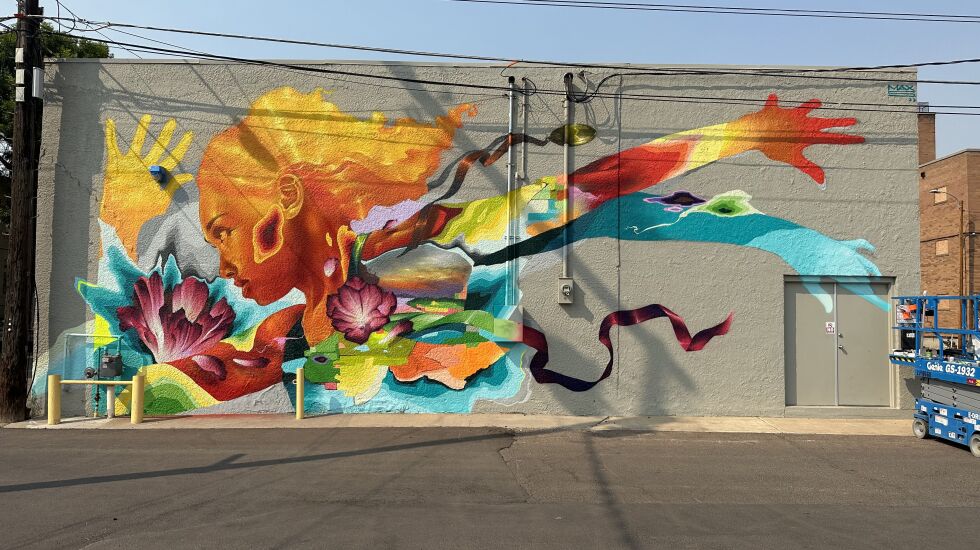
The painting was done in August on an office building for Special Olympics Montana and, according to the group’s web site, the art “emphasizes the emotional and spiritual transaction between athletes and volunteers.”
“The running flame also contains bits of Montana including the skyline and bitterroot,” the state flower.
In September, Sansing did a mural in St. Paul, Minnesota, as shown below.

Titled “The Magic Hour,” Sansing wrote about the artwork:
“The image is of a boy resting and taking in a sunset while nature begins to grow and flow through him. When I was a kid I would sit on my front porch after school and draw till the sun went down, in those moments I found that I was my most creative self in that time of day. I still draw upon this energy till this day and it’s become a source of inspiration for me to keep growing as an artist.”
Meantime, Sansing also hit Hawaii earlier this year to do a mural there. Done on the side of a school, it’s shown below.
There’s the image of a girl, plus plants and lava.
“The whole wall is kind of like a cycle of growth,” he says. “It’s a hodgepodge of things but it’s all kind of connected.”
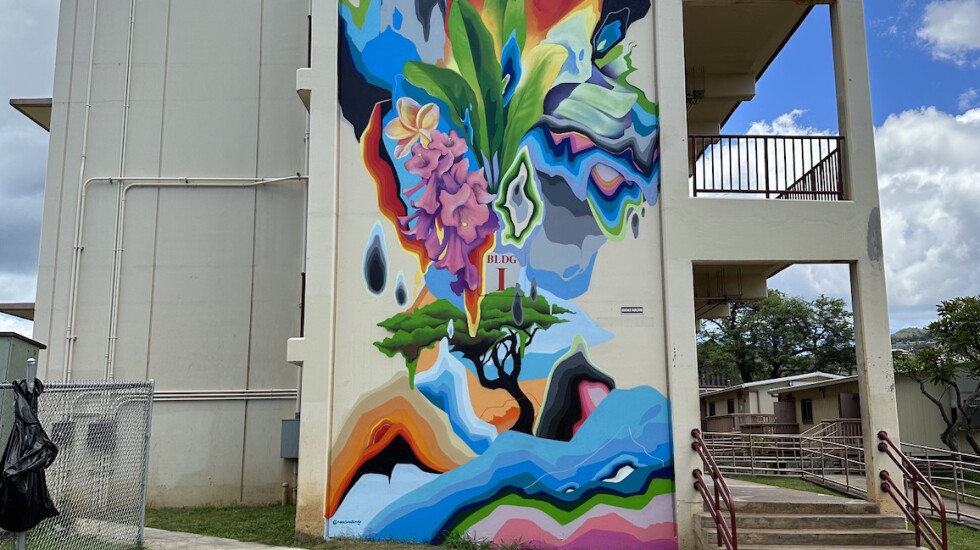
Sometimes what’s old is news. Or, at least, worth a little ink.
That’s my way of saying, I’ve passed by the mural shown below a lot over the years, but never really stopped to figure it out, or appreciate it, so I thought I’d give it a little air now. Besides, its 50th anniversary is upon us.
Called “For a New World (Para un Mundo Nuevo),” the mural was painted in 1973 by John Pitman Weber and a colleague on the side of the Holy Covenant United Methodist Church at 925 W. Diversey Parkway.
It was restored in 1996 by Weber and Bernard Williams.

According to the Chicago Public Art Group, the painting “was the result of nearly a year of discussions with members” of the church “who wanted the wall to be ‘a window to the world’ that could express both their concerns and their faith.”
“The resulting mural is divided into three sections by buttresses and each section surrounds a stained glass window.”
The first part, shown below, is called “Confession” and intended to symbolize “the evils of our time — brutality, killing, repression.”
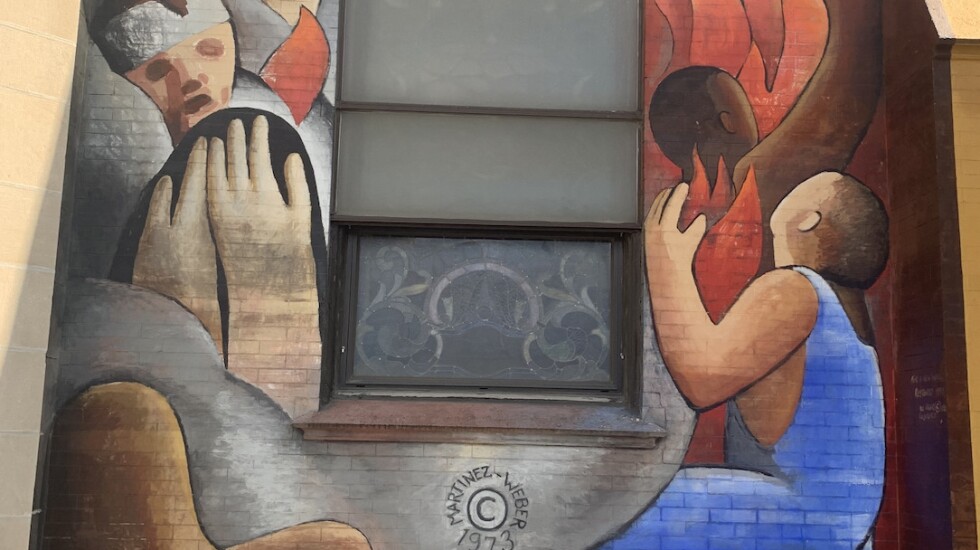
The second panel, titled “The Word,” is supposed to show “the promise of the Word, the promise of a new world where there will be neither oppressor nor oppressed, exploiter nor exploited, where justice and peace seem like a new city.”
“The new world is symbolized here by men, women and children, young and old, gay and straight, all racial groups, living in light and harmony.”
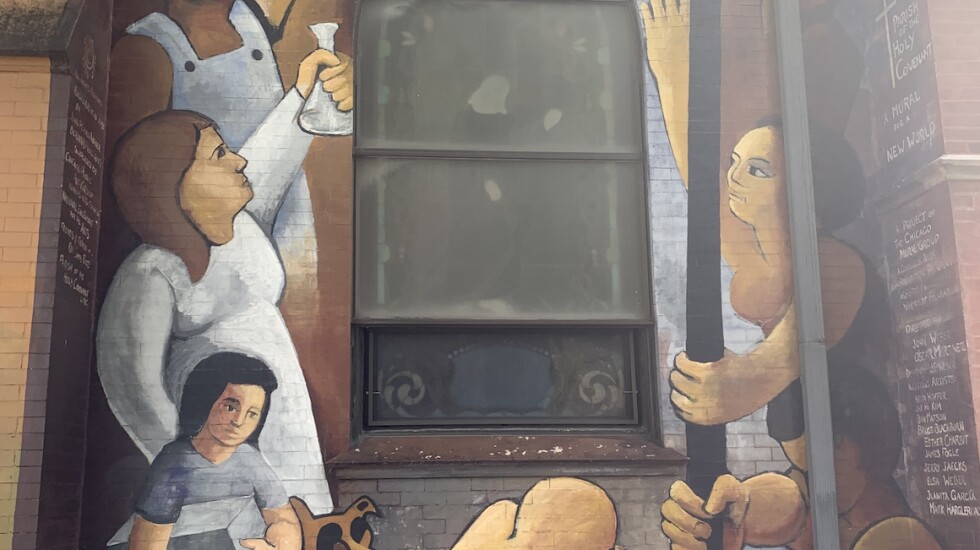
The panel furthest to the right is called “Offering,” and it “represents the dedication of our lives to bringing about the new world of justice in our daily work,” according to CPAG.

Oak Park artist Jonathan Franklin just completed a joyful mural in the west suburb on a railroad retaining wall.
Called “Joie de Vivre,” or “Joy of Life,” Franklin says the figures featured in the painting are “dancing, they look like they’re enjoying life.”
“I’m a big fan of Picasso and I enjoy the same sort of spirt that Matisse injects into his work, and Chagall, and I combined all three of them and came up with these whimsical figures,” he says.
The painting, though, has meaning beyond that.
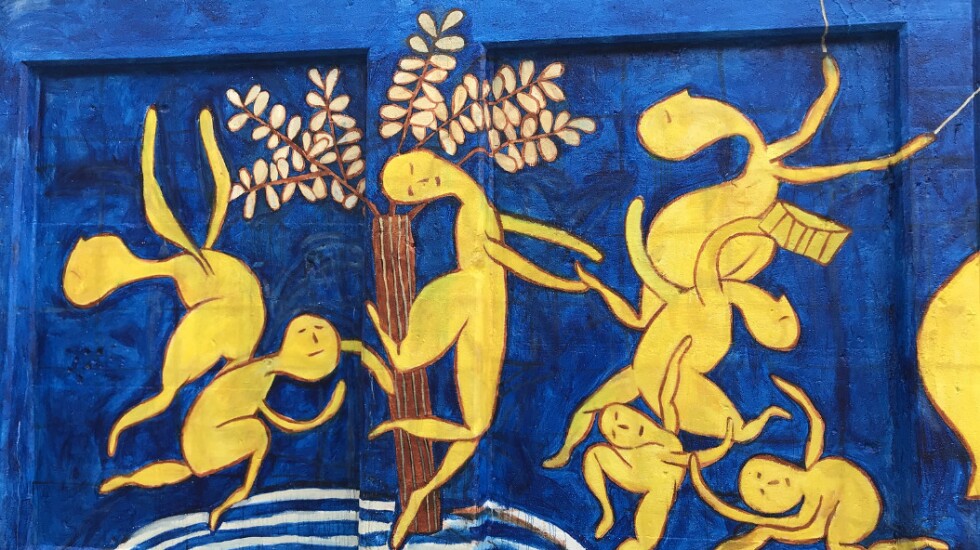
Two decades ago, Franklin volunteered with a social service agency, Hephzibah Children’s Association, across the street for kids who, according to its web site, “have endured significant, severe and sustained trauma.”
With children from there, he painted three murals on the railroad wall.
They faded over time, and a local arts group recently asked whether he’d be willing to return to the wall and paint something new where the original murals had been.
So that’s what Franklin did in September. It spans about 70 feet in length and took him 10 days to create.
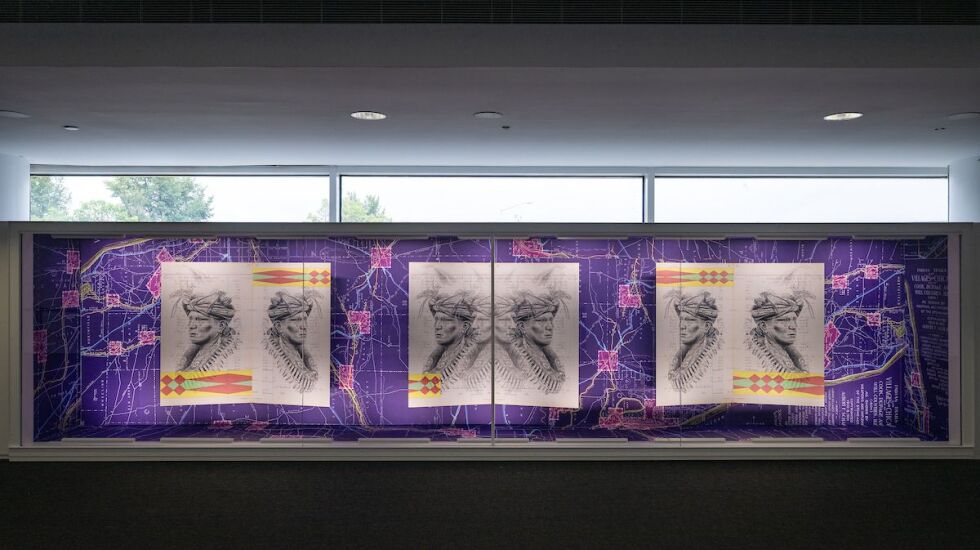
We’ve been showcasing in bits and pieces over the last few weeks the new murals installed at O’Hare Airport — and the one shown above is by artist Chris Pappan, who’s described as “a Chicago-based artist of Kaw, Osage and Cheyenne River Sioux heritage.”
It’s titled ”Akikipa Washpezhi — Zhegagoynak,” or “The Meeting Place — Chicago.”
O’Hare’s web site explains the context accordingly: “Truthful representations of the people endemic to the area have been erased and replaced with images of generalized, plains-based misconceptions of Native Americans.”
“From a hand-drawn image on ledger paper that survived the Great Chicago Fire, combined with historical maps from a time when the Fox and other local tribes lived freely in this area, the piece represents resilience and reverence for the contributions of indigenous peoples of Chicago.”
Click on the map below for a selection of Chicago-area murals
Thanks for reading the Murals & Mosaics newsletter! Check out other newsletters from the Sun-Times ranging from general morning news to high school sports here.
If you want a copy of our two-year murals/mosaics anniversary magazine, click here, copies are just $4.99 apiece.
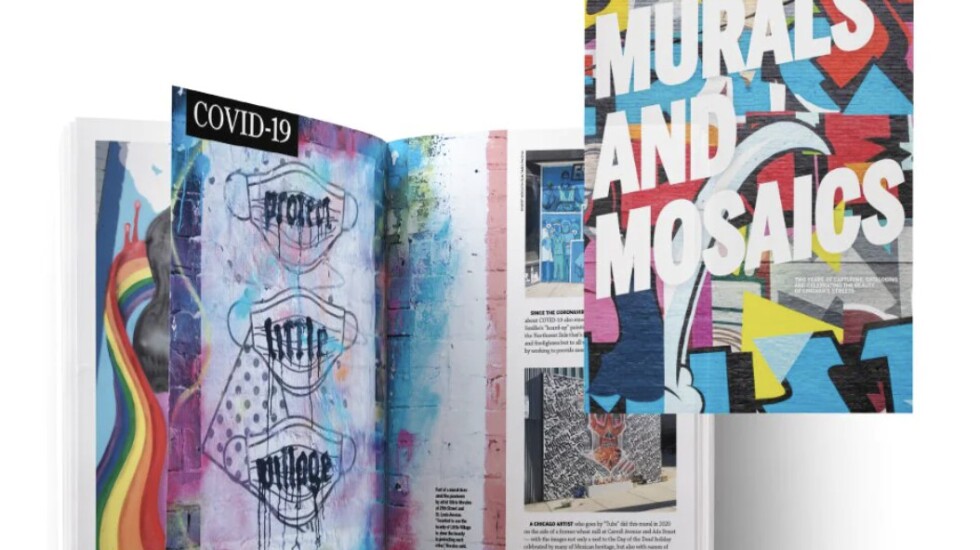
Got a mural or other piece of public art you’d like us to look into? Send an email to murals@suntimes.com and we’ll check it out.
Wanna share with others how to subscribe to this free weekly email newsletter? Here’s the link to sign up.
Have a great weekend!
Robert Herguth, Sun-Times



